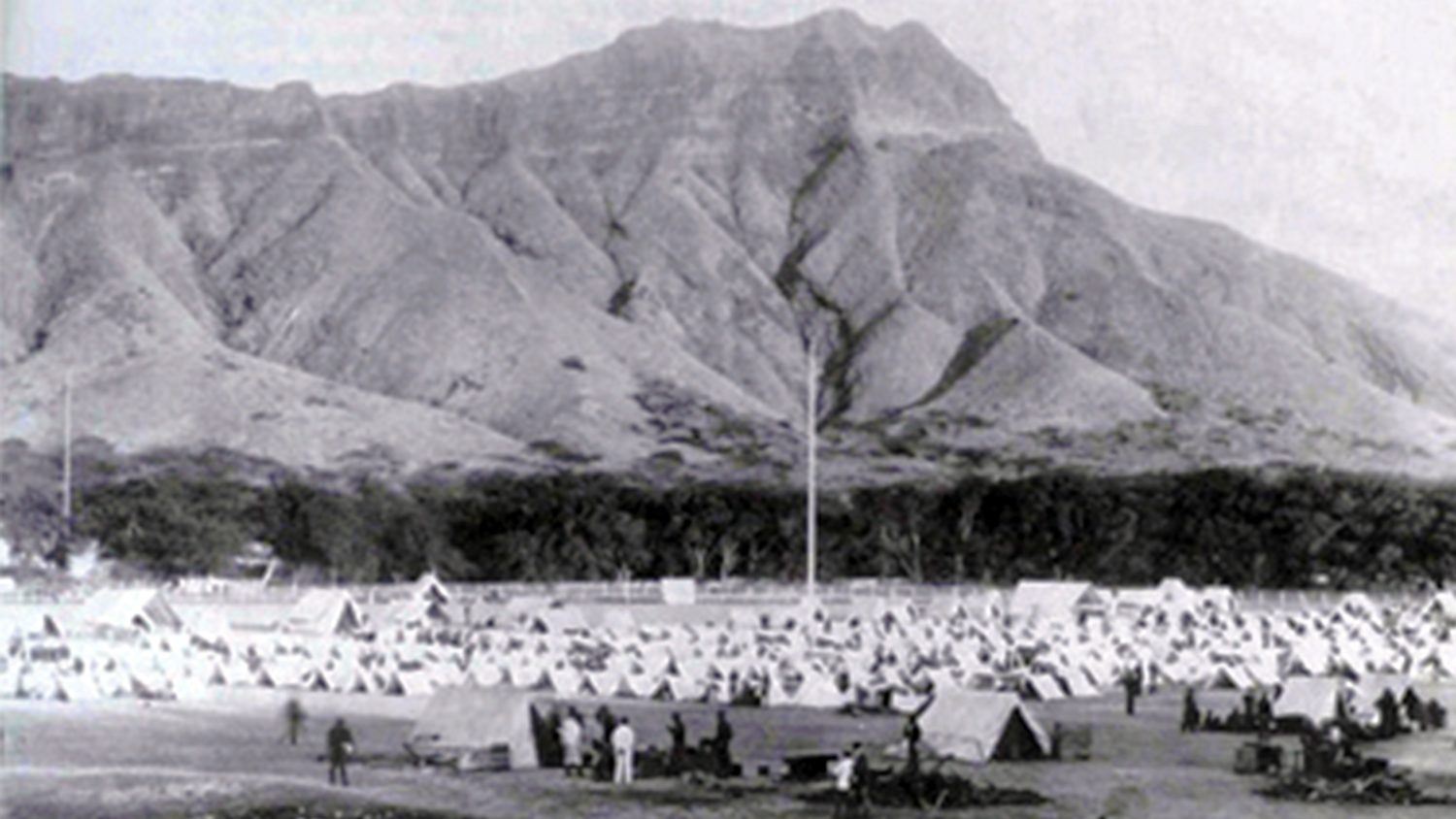#FlashbackFriday: August 1898—Hawaii’s First Post Exchange Opens

On July 7, 1898, spurred by the nationalism aroused by the Spanish-American War, the United States officially annexed Hawaii at the urging of President William McKinley. By August, a military buildup began, with the first army base in Waikiki called Camp McKinley (pictured above). Soldiers trained at the facility before departing for the Philippines to fight in the Spanish-American War.
Sources differ on the date the camp was established, but it appears to have been between Aug. 12 and Aug. 16. According to “One Hundred Years of Service: A History of the Army and Air Force Exchange Service,” a post exchange—the first in the Pacific and one of the first, period—opened 126 years ago in a tent on Aug. 16, 1898.
Details about the post exchange are hard to come by. Although articles in 1898 Hawaiian newspapers mention grocery stores at Camp McKinley, none specifically mentions a post exchange until a July 1, 1899, Honolulu Star-Bulletin item asking post exchanges at Camp McKinley to support monthly recreation days by “offering prizes and providing facilities and apparatus.”
A July 27, 1901, Honolulu Star-Advertiser article about life at Camp McKinley (subtitled “Camp McKinley and Its Gallant Men”) goes a little deeper: “The Post Exchange forms quite a feature in the life of the soldier. Here it is that he secures pipes, tobacco, shirts of a different pattern from those issued by Uncle Sam, cigars, belts and ice cream. Lunches are served the men here, the bill of fare being different from that furnished in the regular mess.”
Camp McKinley remained in operation until Fort Shafter opened in 1907. Some form of post exchange at Fort Shafter dates to when the installation opened. By 1910, post exchanges in Hawaii were also open at Schofield Barracks, Fort Armstrong, Fort DeRussy, Fort Reger and Fort Upton. Today, the Exchange operates stores at Schofield Barracks, Joint Base Pearl-Harbor Hickam, Fort Shafter and elsewhere in Hawaii.
Additional sources: Exchange History on Flickr, Newspapers.com, U.S. Department of State Archive, neaToday




